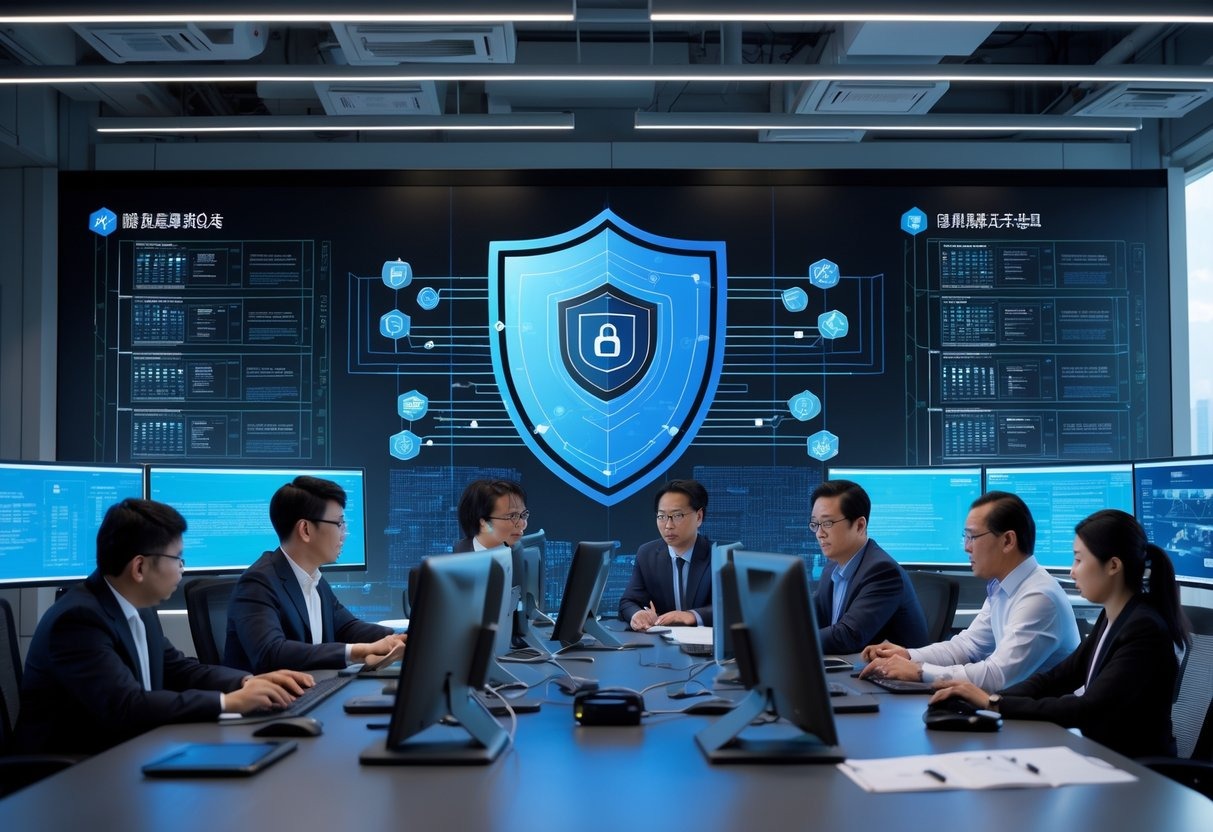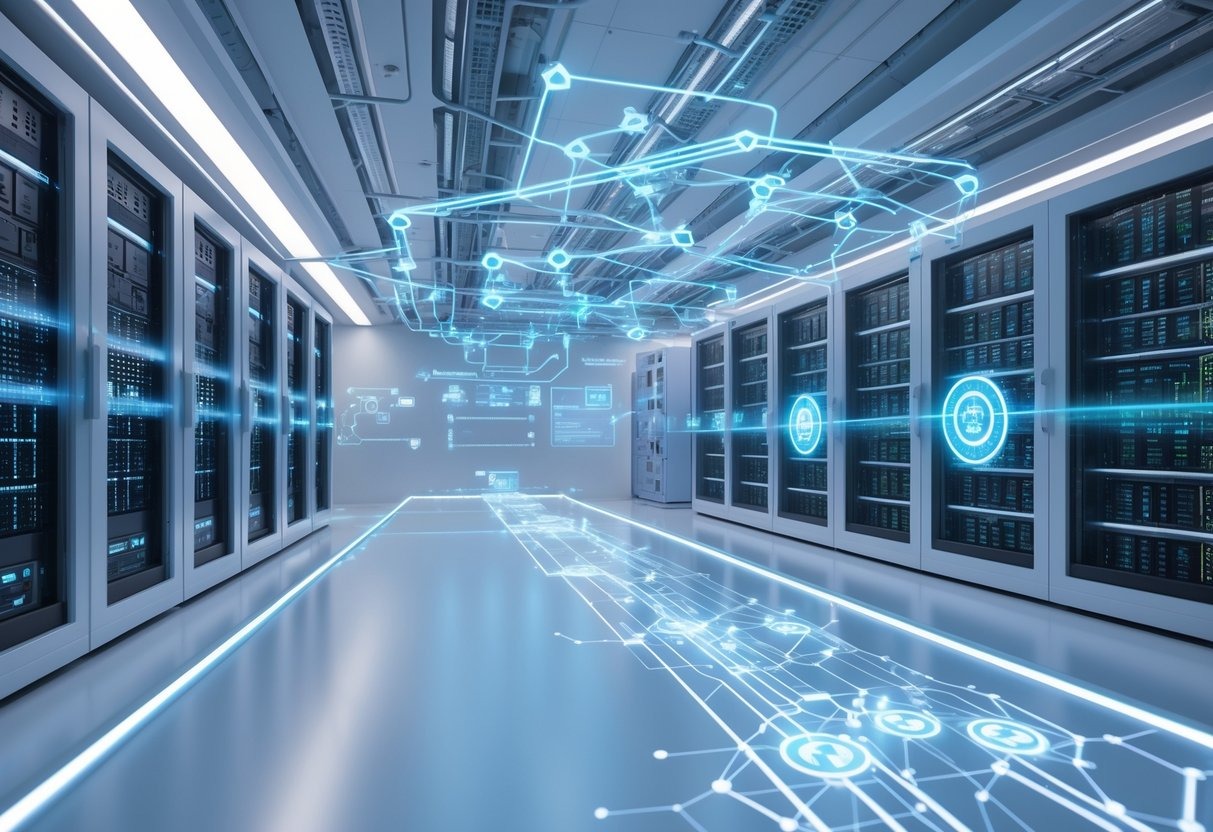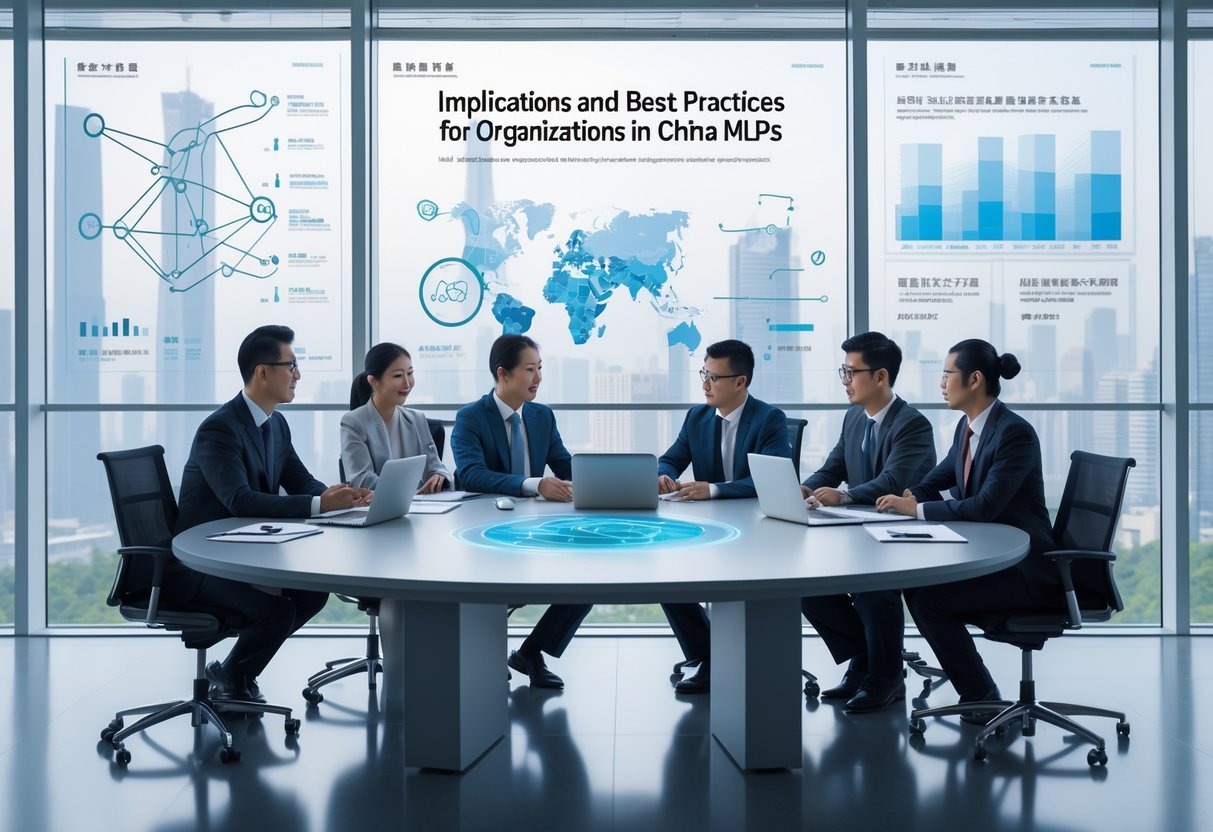China’s Multi-Level Protection Scheme (MLPS) shapes how organizations handle cybersecurity in the country. It sets rules for classifying and protecting network systems based on importance and risk.
You need to understand MLPS 2.0 because it tells you how to secure your data and follow China’s cybersecurity laws.
MLPS 2.0 takes the old framework and adds new tech like cloud computing, big data, and the Internet of Things. You have to check your systems, pick a protection level from one to five, and meet the security rules for your level.
This helps lower risks, protect sensitive info, and keep you in line with national standards.
Understanding MLPS isn’t just about ticking boxes for regulations. It’s also about building trust, making your systems safer, and getting ready for audits or inspections.
If you know what’s expected, you can plan ahead and work with more confidence in China’s digital world.
Key Takeaways
- MLPS 2.0 sets cybersecurity standards for all network systems in China.
- It sorts systems into five levels, each with different security needs.
- Following the rules helps protect data, lower risk, and meet legal requirements.
Understanding China's Multi-Level Protection Scheme (MLPS)

China’s Multi-Level Protection Scheme (MLPS) sets clear cybersecurity rules for groups that use or run information systems. It tells you how to sort, protect, and watch over systems based on national security and the risks of a data leak.
Definition and Purpose of MLPS
The Multi-Level Protection Scheme (MLPS) is a national cybersecurity plan under China’s Cybersecurity Law. You have to put your network or system into one of five protection levels, depending on how important it is to national security, social order, or the public.
You need to put in place technical and organizational controls that fit your level. For example, Level 1 needs basic safety steps, but Level 3—used by cloud or financial companies—needs more advanced monitoring and government checks.
MLPS tries to make sure every sector follows a basic level of cybersecurity. It protects sensitive data, cuts down on network risks, and makes sure key industries follow national standards.
Historical Development and Regulatory Background
China rolled out the first MLPS in 2007, calling it MLPS 1.0. It aimed to get government and industry on the same page for cybersecurity.
As tech changed, MLPS 2.0 came out to cover cloud computing, big data, and the Internet of Things. The Cybersecurity Law of 2017 made MLPS a must-do for all network operators, big or small.
You have to assess your systems, pick the right level, and report to local public security. MLPS 2.0 also matches up with other national rules, like data export controls and critical infrastructure protection.
This all works together to make China’s cyber rules stronger.
Role of the Ministry of Public Security in MLPS
The Ministry of Public Security (MPS) leads the way on MLPS enforcement. They make the technical standards, run certification, and check for compliance. Local public security offices handle filings and audits under their direction.
You need to register your MLPS level with the MPS or their local branch. They’ll look at your paperwork, check your systems, and tell you to fix things if they spot problems.
The MPS also gives training and puts out guides to help organizations know what to do. They make sure MLPS gets followed the same way across different regions and industries.
Basically, the MPS connects the dots between cybersecurity policy, standards, and law enforcement.
Ensuring cybersecurity compliance is just one part of doing business safely in China. Learn how to verify your partners by reading our guide, How to Check if a Chinese Company is Legit.
Key Features and Structure of MLPS 2.0

China’s Multi-Level Protection Scheme 2.0 (MLPS 2.0) gives you a way to handle cybersecurity risks for all types of networks and systems. It sorts systems by how important they are to the country and the public, uses strict checks, and updates old rules to fit new tech like cloud computing and big data.
MLPS 2.0 Levels and Classification Criteria
MLPS 2.0 puts networks and systems into five security levels. Each level shows how much damage a breach could do to the country, the public, or your business.
You need to classify each system before you use it. The level you pick decides what security steps, audits, and reviews you’ll need.
Higher levels mean tighter controls, more watching, and more government checks.
Risk Assessment and Level Determination
Start by figuring out what data and assets your network uses. Then, think about what could happen if someone broke in—how would it affect national security, the public, or your company?
This helps you pick the right MLPS level. The Public Security Bureau (PSB) checks your classification and certification.
You have to send in papers about your network setup, data sensitivity, and how you protect things. Local officials look over your info and confirm your level.
Once you get the green light, you put in the right controls, like access control, encryption, incident response, and regular audits. Higher levels get checked more often and must follow stricter rules to keep systems safe.
Differences Between MLPS and MLPS 2.0
MLPS 2.0 covers more ground than the old version. Now it includes cloud services, mobile networks, big data platforms, and industrial control systems.
It also lines up better with international standards like ISO 27001 and GDPR, making it easier for global companies to fit in. You’ll see clearer rules and more details, especially for personal data protection.
Another big change? Tougher supervision and enforcement. Officials can do spot checks, make you fix problems, or even hit you with penalties if you don’t follow the rules.
MLPS 2.0 feels more up-to-date for today’s cybersecurity needs in China.
Understanding data protection is easier when you know the business structures involved. Explore the different setups by checking out our article, Types of Companies in China: A Comprehensive Overview.
MLPS 2.0 Compliance and Certification Process

China’s MLPS 2.0 lays out steps for sorting, checking, and certifying information systems under the Cybersecurity Law. You have to follow the process to get approval from the Ministry of Public Security (MPS) and keep up with regular checks and reviews.
Certification Requirements and Procedures
First, you sort your network or system into one of five levels, based on how important it is to national security, social order, or the public. Most business systems end up in Levels 2 or 3.
After you pick a level, you make technical and management documents showing your system setup, how you handle data, and what security you use. These documents are the core of your MLPS 2.0 review.
The certification steps go like this:
- Filing your system info with local public security.
- Security assessment by an approved evaluation agency.
- Approval and certificate from the MPS.
Once you’re certified, you register it and update your paperwork if your system changes a lot. Your certificate only stays good if you keep meeting all the rules.
Role of Audits and Third-Party Assessments
You need regular audits to prove you still follow MLPS 2.0. Auditors check that your systems stay at the right level and your protections work.
Third-party assessors, approved by the MPS, do independent checks. They look at your security design, access controls, and how you handle incidents. Their reports decide if you keep or lose your certification.
Internal audits matter too. You should check logs, test backups, and make sure staff follow security policies. Good records help you pass official inspections.
Level 3 systems or higher usually get checked every year. Lower levels might get less frequent audits. If you don’t work with auditors, you could lose your certificate.
Oversight, Enforcement, and Penalties
The MPS and local security offices keep an eye on MLPS 2.0. They track filings, review audit results, and look into rule-breaking.
If they find problems, they can make you fix things, stop your system, or take away your certificate. Big or repeated issues can lead to fines or even criminal charges.
You have to report security problems quickly and help with investigations. Being open with the authorities can lower your risk of trouble.
Penalties depend on how serious the issue is, but even small mistakes can mess up your business. Staying on top of MLPS 2.0 keeps your company legal and protects your reputation in China.
Implications and Best Practices for Organizations

China’s MLPS 2.0 changes how you handle data, tech, and partnerships in the country. You’ll need to pay close attention to system classification, watch your vendors, and try to follow international cybersecurity standards if you want to stay compliant and protect national interests.
Impact on Foreign and Domestic Companies
MLPS 2.0 covers both Chinese and foreign companies that run networks or handle data in China.
You have to put each information system into one of five levels, depending on how much it could affect national security, public order, or people’s rights.
Foreign companies usually deal with extra headaches. Even if you host systems abroad or send data across borders, Chinese rules might still apply.
You’ll need to check where your data goes, where you store it, and what technical controls you use to stay compliant.
Domestic firms work with local regulators and public security when classifying and inspecting systems.
If your system is high-level, you’ll need more paperwork, audits, and technical checks.
Vendor and Third-Party Management
You need to make sure your vendors and service providers follow MLPS 2.0 rules when they handle your data. This covers cloud services, IT maintenance, and software suppliers.
Set up clear contracts so vendors have to protect your data at the same level you do. Check them out first, and ask for proof they’ve passed MLPS checks or security reviews.
Build a vendor management process that covers:
- Regular security reviews
- Data access restrictions
- Incident reporting procedures
If you use foreign tech providers, double-check that their data transfer and encryption methods fit Chinese cybersecurity rules.
That way, you lower the chances of breaking the law or exposing your data.
Alignment with International Standards
MLPS 2.0 is a bit like ISO/IEC 27001 or NIST CSF, but it focuses way more on national security and government oversight.
If you already use international controls, you can reuse a lot of them for MLPS, so you don’t have to start from scratch.
Take a look at your current controls and match them to MLPS areas like access control, network protection, and monitoring.
Find the gaps that need China-specific fixes, like registering security products or keeping data local.
Using standard frameworks makes audits easier and shows regulators you’re serious about compliance.
It also helps keep your global operations steady while meeting China’s rules.
Strong cybersecurity goes hand in hand with smart business planning. Discover why setting up locally can be a game-changer by reading our guide, 7 Top Benefits of Registering Your Business in China.
Final Thoughts
The China MLPS (Multi-Level Protection Scheme) is a cornerstone of the country’s cybersecurity framework, requiring organizations to classify and secure their information systems according to risk levels.
Compliance is not just a legal obligation — it’s essential for protecting sensitive data and maintaining trust in China’s digital ecosystem. Whether you’re a local company or an international business operating in China, understanding MLPS requirements is crucial.
To ensure your systems meet all regulatory standards and avoid costly penalties, consult China Legal Experts today for professional guidance on MLPS compliance and cybersecurity best practices.
Frequently Asked Questions
What are the primary objectives of China's Multi-Level Protection Scheme (MLPS)?
The MLPS wants to keep national security safe, protect personal and business data, and make sure critical systems keep running.
It tells organizations to use security that matches how sensitive their systems and data are.
How does the MLPS categorize information systems in terms of cybersecurity protection levels?
The MLPS puts systems into five levels depending on how much damage a security breach could cause.
Level 1 is for basic internal systems, and Level 5 covers systems that could hurt national security or public order.
Each level comes with its own technical and management rules, like network protection and access controls.
What are the compliance requirements for foreign companies under the MLPS?
If you’re a foreign company in China, you have to register your information systems with the local public security bureau and go through classification and checks.
Each system gets reviewed to set its protection level before you get certified.
You also need to use technical controls, keep security documents, and let Chinese authorities inspect your systems.
How does the MLPS impact data privacy and cross-border data transfer?
The MLPS pushes for data localization, so critical data and personal info collected in China has to stay in the country.
If you want to send that data abroad, you might need government approval or a security check.
You have to handle data in a way that fits MLPS and other laws like the Cybersecurity Law and Data Security Law.
What are the penalties for non-compliance with the MLPS regulations?
If you don’t follow the rules, you could get fined, have your business suspended, or lose your license.
Sometimes, people in charge can get in legal trouble too.
Authorities might also make you fix your systems or cut off your network access until you comply.
How has the MLPS evolved in recent years to address emerging cyber threats?
The MLPS 2.0 came out in 2019. It covers way more than just old-school IT systems now—it reaches into cloud services, mobile apps, and even industrial networks.
The technical standards got a refresh, too, so they can actually handle today’s threats like data leaks and cyberattacks.
Now, you’ve got to manage security all the time. That means keeping an eye on things and checking your protection levels regularly.
Subscribe to receive updates
Subscribe to receive the latest blog posts to your inbox every week.





